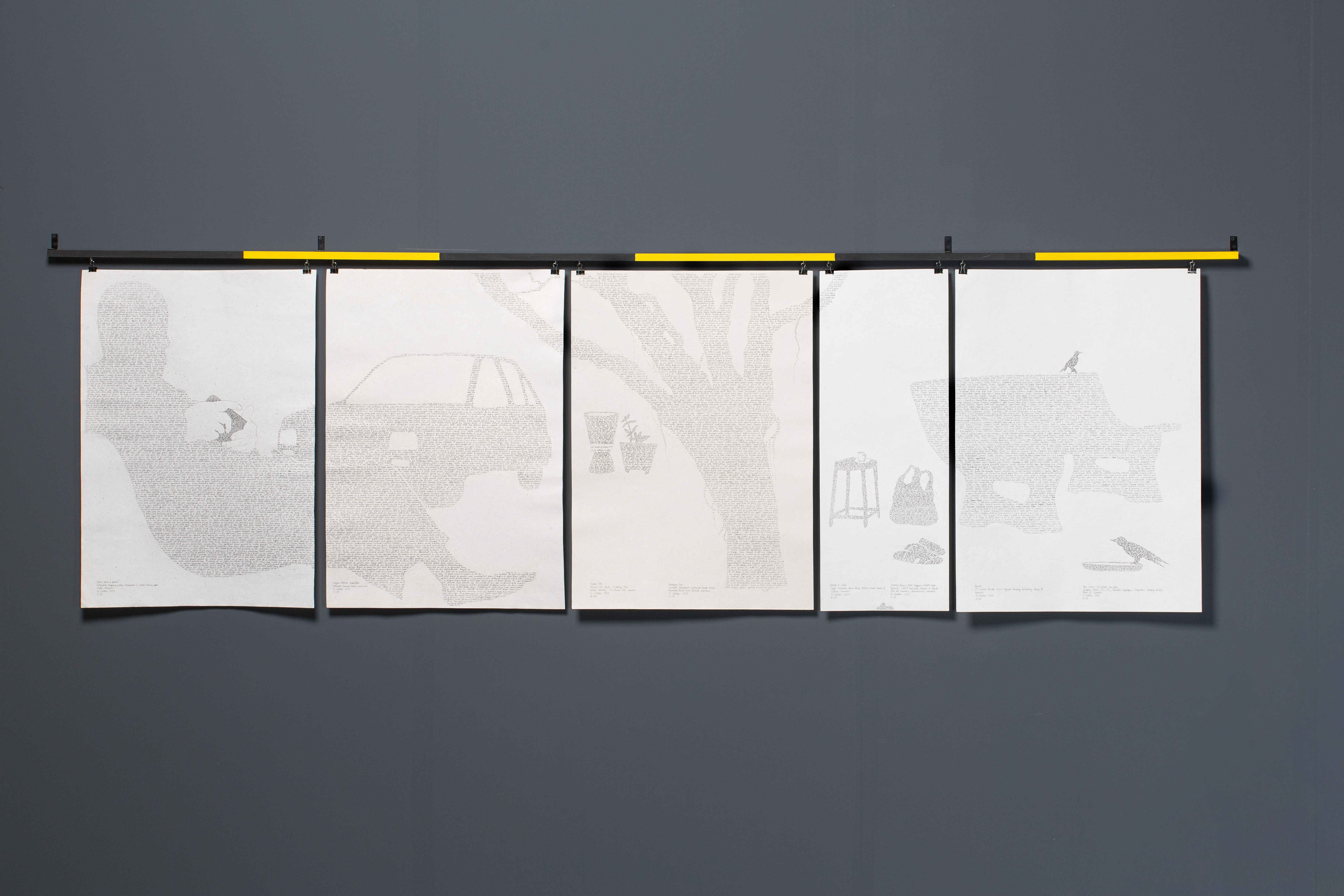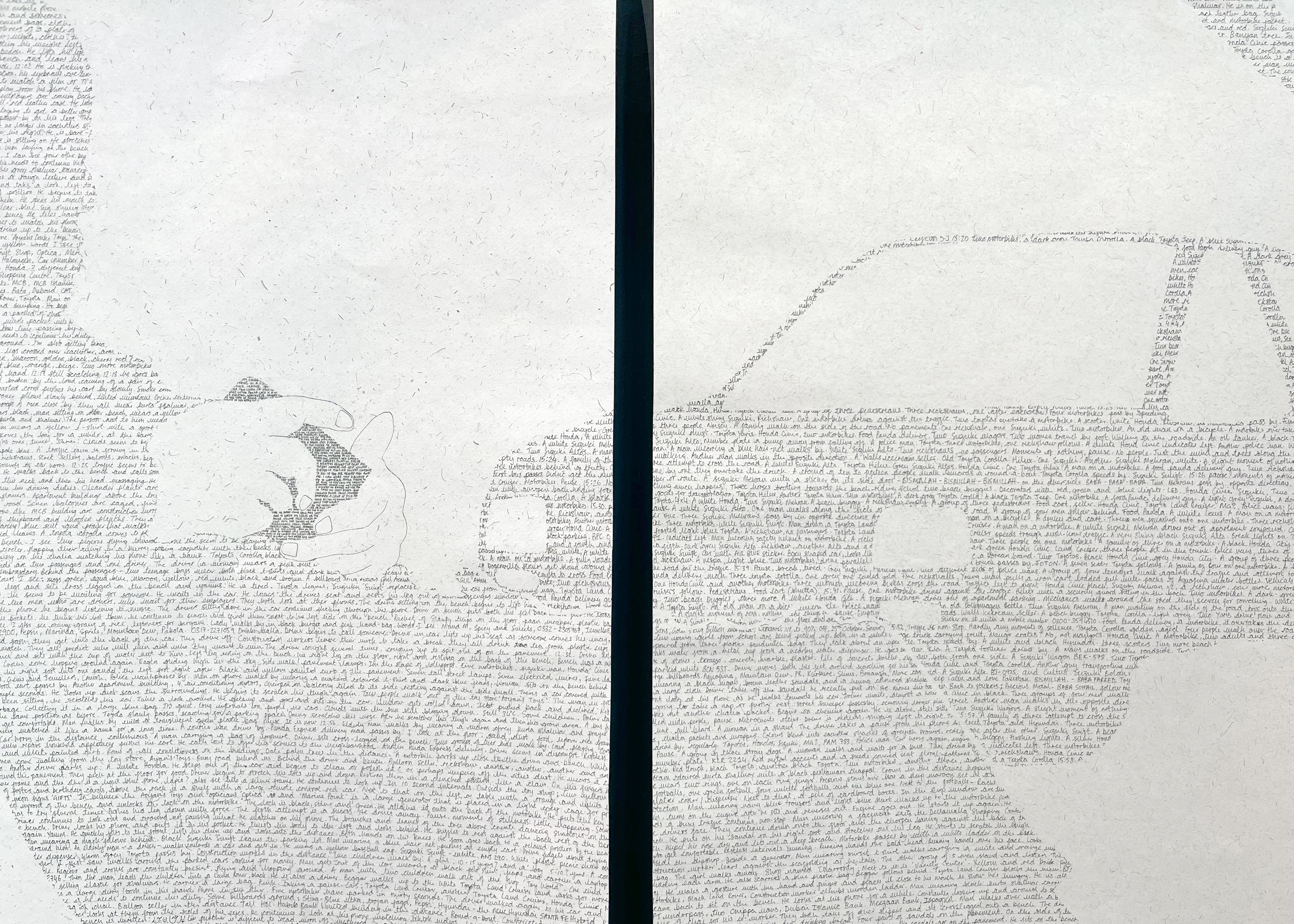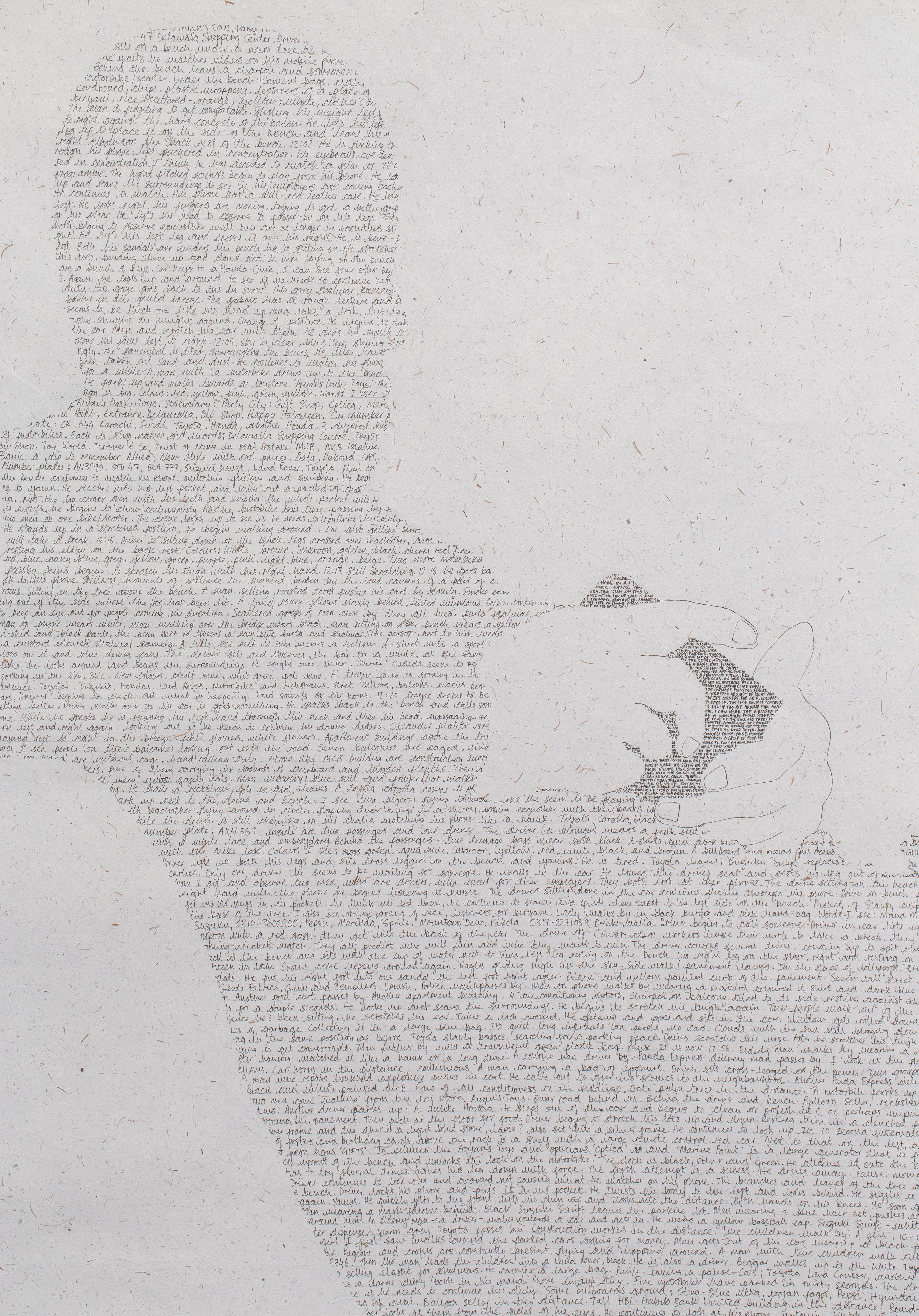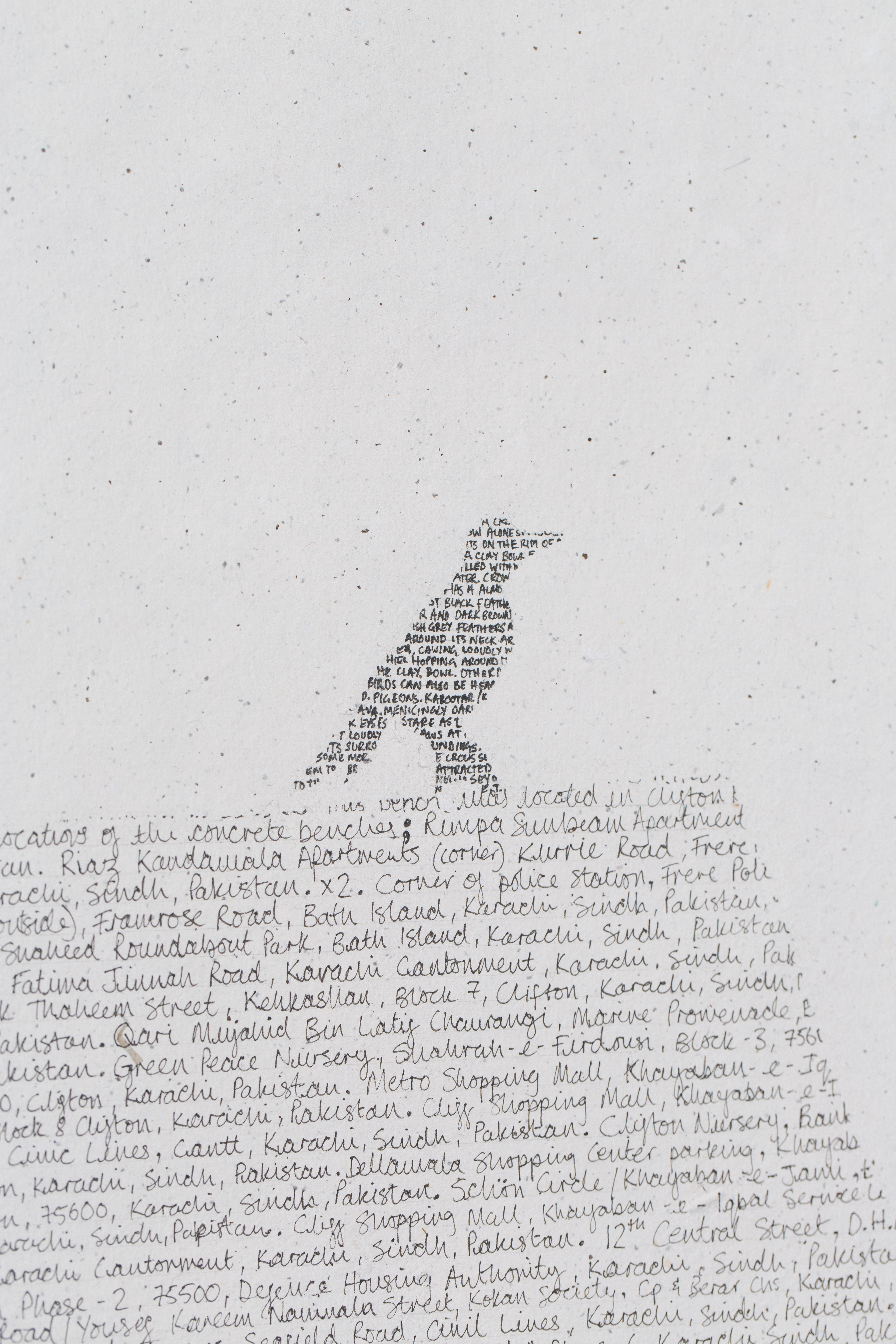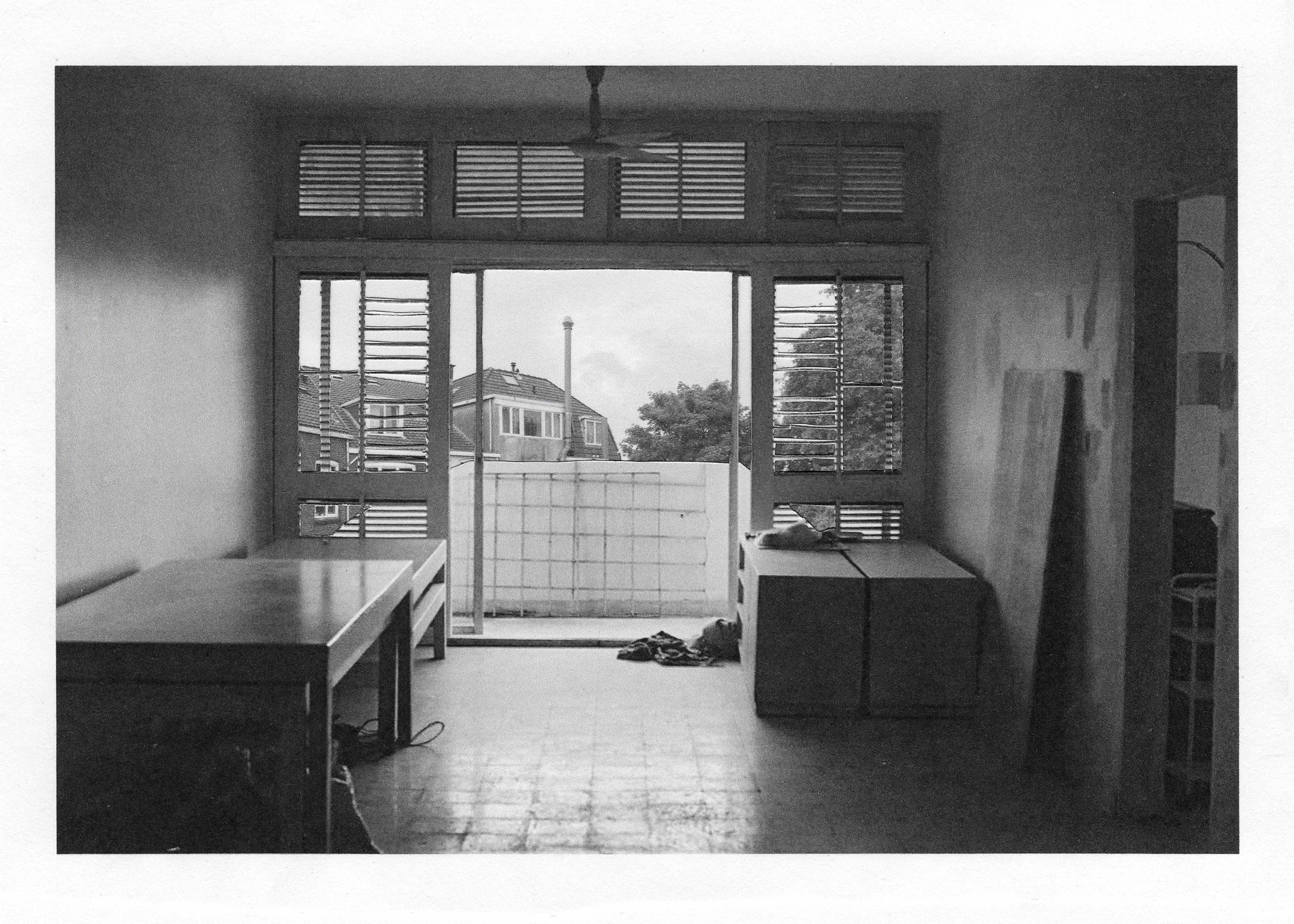An Attempt at Exhausting Several Benches in Karachi
5 panel drawing,
Pen on handmade paper, 77 x 270 cm,
2025
Pen on handmade paper, 77 x 270 cm,
2025
To Quraishi, observing his environment is a way of life. It serves as the most important source of inspiration for his work, also inspired by the novel Tentative d’épuisement d’un lieu parisien (1975) by the writer Georges Perec. Translated into English as An attempt at exhausting a place in Paris, this novel is an account of unremarkable events Perec observed on a Parisian square.
For An Attempt at Exhausting Several Benches in Karachi (2025), Quraishi returned to the place where he partially grew up, and decided to focus on the benches in the public space of Karachi. These benches date from the 1960s, a time when the city evolved into the Paris of the East, thereby establishing a conceptual link with Perec’s novel. Quraishi: ‘I became interested in the act of sitting and waiting during working hours, especially related to colonial history and the domestic occupation, and zooming in on the Kursi Nashin certificate. This certificate granted locals the privilege of being allowed to sit next to a British officer.’
The five-part drawing that is part of this installation was created on the basis of Quraishi’s notes on a moment when present and past, and observing and remembering all coincided.
Text: Esther Darley
Translated from Dutch by Marie Louise Schoondergang (The Art of Translation)
For An Attempt at Exhausting Several Benches in Karachi (2025), Quraishi returned to the place where he partially grew up, and decided to focus on the benches in the public space of Karachi. These benches date from the 1960s, a time when the city evolved into the Paris of the East, thereby establishing a conceptual link with Perec’s novel. Quraishi: ‘I became interested in the act of sitting and waiting during working hours, especially related to colonial history and the domestic occupation, and zooming in on the Kursi Nashin certificate. This certificate granted locals the privilege of being allowed to sit next to a British officer.’
The five-part drawing that is part of this installation was created on the basis of Quraishi’s notes on a moment when present and past, and observing and remembering all coincided.
Text: Esther Darley
Translated from Dutch by Marie Louise Schoondergang (The Art of Translation)
An Attempt at Exhausting Several Benches in Karachi
5 panel drawing,
Pen on handmade paper, 77 x 270 cm,
2025
Pen on handmade paper, 77 x 270 cm,
2025
To Quraishi, observing his environment is a way of life. It serves as the most important source of inspiration for his work, also inspired by the novel Tentative d’épuisement d’un lieu parisien (1975) by the writer Georges Perec. Translated into English as An attempt at exhausting a place in Paris, this novel is an account of unremarkable events Perec observed on a Parisian square.
For An Attempt at Exhausting Several Benches in Karachi (2025), Quraishi returned to the place where he partially grew up, and decided to focus on the benches in the public space of Karachi. These benches date from the 1960s, a time when the city evolved into the Paris of the East, thereby establishing a conceptual link with Perec’s novel. Quraishi: ‘I became interested in the act of sitting and waiting during working hours, especially related to colonial history and the domestic occupation, and zooming in on the Kursi Nashin certificate. This certificate granted locals the privilege of being allowed to sit next to a British officer.’
The five-part drawing that is part of this installation was created on the basis of Quraishi’s notes on a moment when present and past, and observing and remembering all coincided.
Text: Esther Darley
Translated from Dutch by Marie Louise Schoondergang (The Art of Translation)
For An Attempt at Exhausting Several Benches in Karachi (2025), Quraishi returned to the place where he partially grew up, and decided to focus on the benches in the public space of Karachi. These benches date from the 1960s, a time when the city evolved into the Paris of the East, thereby establishing a conceptual link with Perec’s novel. Quraishi: ‘I became interested in the act of sitting and waiting during working hours, especially related to colonial history and the domestic occupation, and zooming in on the Kursi Nashin certificate. This certificate granted locals the privilege of being allowed to sit next to a British officer.’
The five-part drawing that is part of this installation was created on the basis of Quraishi’s notes on a moment when present and past, and observing and remembering all coincided.
Text: Esther Darley
Translated from Dutch by Marie Louise Schoondergang (The Art of Translation)
